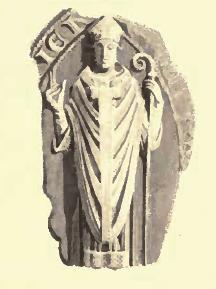Andreas de Moravia facts for kids
Quick facts for kids Andreas de Moravia |
|
|---|---|
| Bishop of Moray | |
 |
|
| Church | Roman Catholic Church |
| See | Diocese of Moray |
| In Office | 1222–1242 |
| Predecessor | Bricius de Douglas |
| Successor | Simon de Gunby |
| Orders | |
| Consecration | 1223 x 1224 |
| Personal details | |
| Born | Probably late 1100s Probably Moray |
| Died | Moray 1242 |
| Previous post | Bishop of Ross (elect) |
Andreas de Moravia (also known as Andrew of Moray) was an important Scottish bishop in the 1200s. He came from a powerful family in the Moray region of Scotland. He is most famous for starting the building of the beautiful Elgin Cathedral.
Contents
Who Was Andreas de Moravia?
Andreas de Moravia was born in the late 1100s, probably in Moray, Scotland. He was a younger son of Hugh de Moravia. His family originally came from Flanders, which is a region in modern-day Belgium. They were important lords in areas like Duffus in the Moray region.
Early Life and Choices
Before becoming a bishop, Andreas might have been a priest at the church of St. Peter at Duffus. In 1213, he was chosen to be the Bishop of Ross. However, he decided not to accept this important job. Pope Innocent III allowed him to step down from this position. We don't know the exact reasons why he refused.
Becoming Bishop of Moray
In 1222, the Bishop of Moray, Bricius, passed away. Andreas was then chosen to be the new Bishop of Moray. This time, he accepted the role. He traveled to Rome and was officially confirmed and made a bishop by April 1224.
Building Elgin Cathedral
One of Andreas' first big actions as bishop was to ask the Pope for permission to move the main church of the bishopric. This main church, called a cathedral, was at Spynie. Andreas wanted to move it to Elgin. On April 10, 1224, the Pope gave him permission.
The New Cathedral's Foundation
Andreas' greatest achievement was starting the building of Elgin Cathedral. This cathedral would become the main church for all future medieval bishops of Moray. On July 19, 1224, the first stone of the new Elgin Cathedral was laid in a special ceremony. The cathedral was still being built when Andreas passed away in 1242.
A Leader in Scotland
As the head of one of Scotland's most important bishoprics, Andreas also played a role in the country's wider political and religious life. For example, he witnessed important documents signed by King Alexander II. He also led the ceremony to make William de Bondington the new Bishop of Glasgow.
Later Life and Legacy
In 1231, Pope Gregory IX sent a letter saying that elections for the Bishop of Moray should be free. This might suggest that people were worried about Bishop Andreas' health at the time. However, he lived for another decade. Andreas de Moravia passed away late in 1242. He was buried in the south side of the choir in Elgin Cathedral, under a large blue marble stone. His legacy lives on through the beautiful Elgin Cathedral, which stands as a testament to his vision.

